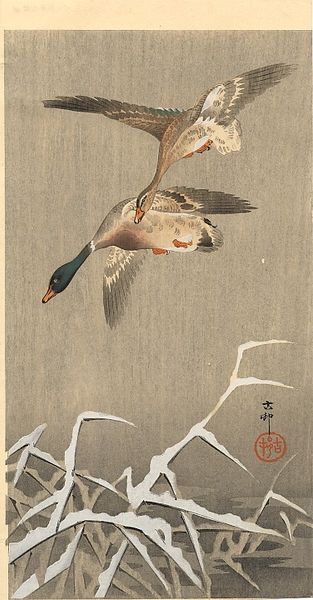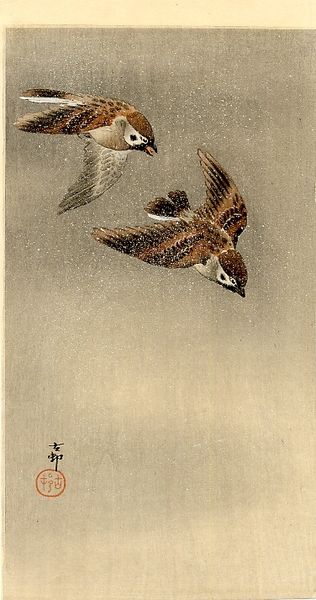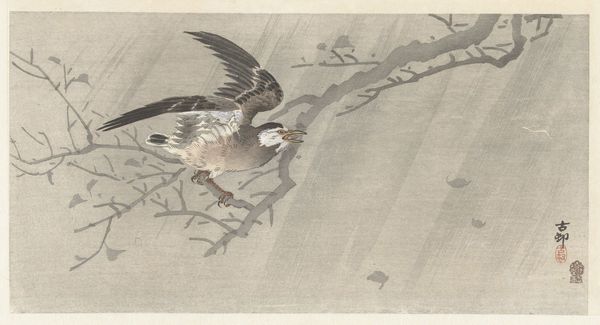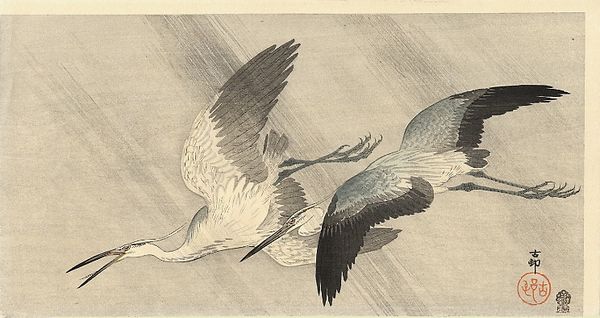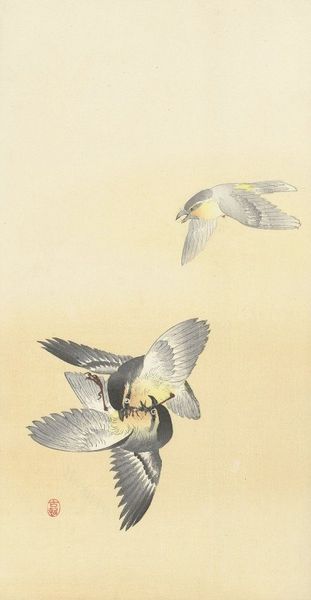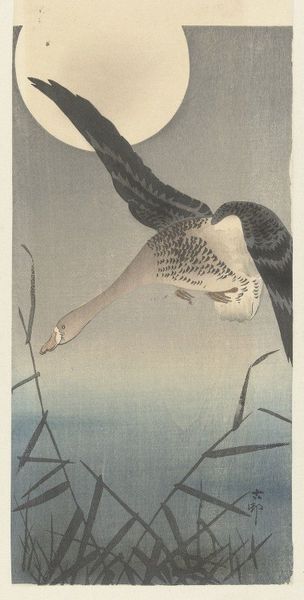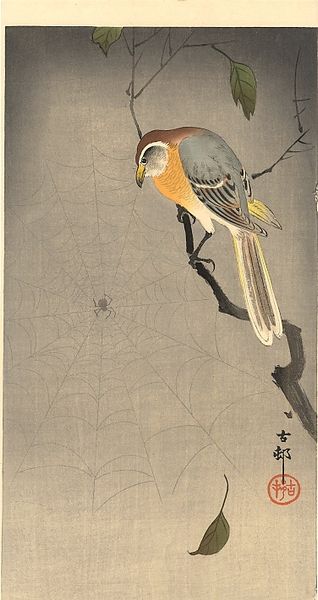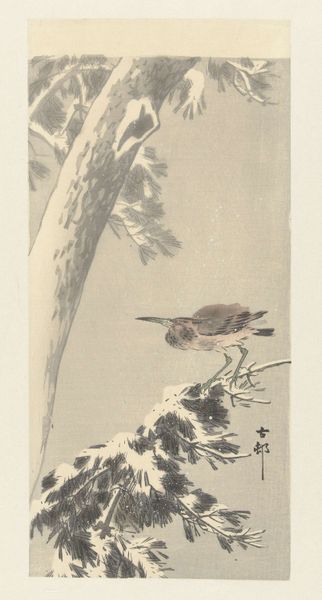
print, woodblock-print
# print
#
asian-art
#
bird
#
ukiyo-e
#
woodblock-print
Dimensions: 19 x 36.2 cm
Copyright: Public domain
Curator: We are looking at “Lapwing,” a woodblock print by Ohara Koson, a significant figure in the Shin-hanga movement, which revitalized traditional ukiyo-e art in the early 20th century. Editor: My initial reaction is one of quiet grace. The muted tones create a tranquil atmosphere, almost as if the bird is caught mid-flight in a silent, snowy landscape. Curator: Yes, the lack of bright colors certainly contributes to that feeling. But let’s not overlook Koson's political leanings, expressed throughout his career in his choice of representing wildlife: one can assume here an invocation to nature preservation and respect to the environment as well. The Western fascination with Japanese aesthetics and its natural life as being underrepresented might have called for these stances. Editor: That's a compelling interpretation. I was immediately drawn to the lapwing itself. Notice how Koson captures its delicate features, especially those expressive wings, that suggest both freedom and fragility. What are the traditional significations around lapwings in Japan and broader Asian cultures? Curator: Traditionally, birds in Japanese art can represent various concepts depending on the species. Cranes, for instance, are associated with longevity and good fortune. In Shinto beliefs, birds were seen as messengers between the human and spirit worlds. While the lapwing might not carry specific symbolic weight in the same vein, its association with nature and the changing seasons could tie it to broader themes of renewal and transformation, specially at a period of great technological advance. The landscape elements present also point in such direction. Editor: I agree. And the single branch in the lower part is suggestive. The bare branches add to the melancholy feel for sure, speaking maybe of endurance in winter’s embrace before blooming. But maybe here there is an invocation to endurance, since at this time the world was in a state of turbulence... I believe it might symbolize some strong beliefs of the artist here. Curator: That’s interesting, indeed. One can see then how that bird can invoke also resilience. Also worth pointing is the influence of "Japonisme" on artists during the period when "Lapwing" was done; the cultural cross pollination might explain Koson choices... The landscape might be not from Koson homeland. Editor: Overall, the image remains an invitation for contemplating on a wide array of emotions like the complex realities of nature and preservation struggles within Japan and beyond its borders. Curator: Absolutely. This piece also prompts questions about representation of cultural significance beyond visual depiction.
Comments
No comments
Be the first to comment and join the conversation on the ultimate creative platform.

